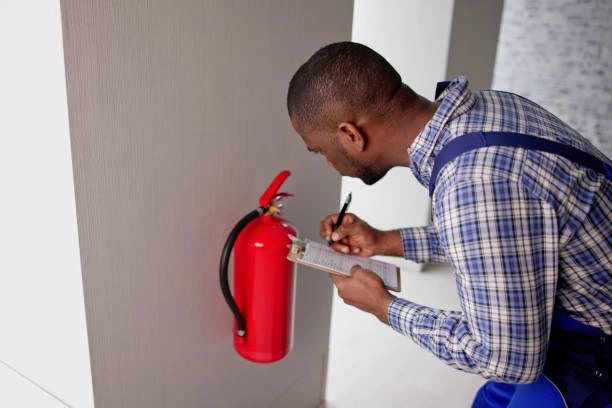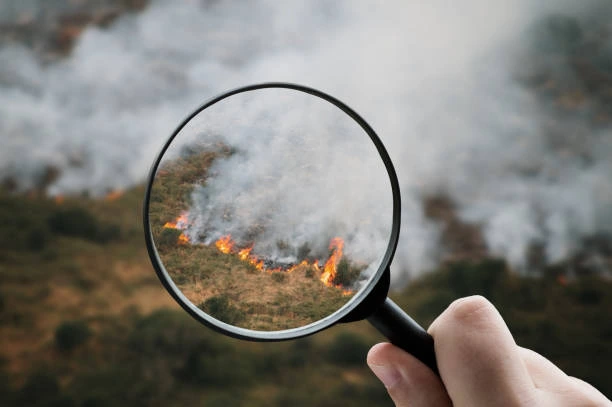Completing a Fire Risk Assessment: Who’s Responsible and Why
In the UK, completing a Fire Risk Assessment (FRA) is a legal requirement for most non-domestic premises, and it is the responsibility of the “responsible person” or “duty holder.” The Fire Safety Order 2005, officially known as the Regulatory Reform (Fire Safety) Order 2005, establishes the legal framework governing fire safety in non-domestic establishments in England and Wales. In Scotland and Northern Ireland, there are equivalent regulations.
Here’s an overview of who is responsible for completing a Fire Risk Assessment and why:
Responsible Person
The primary person responsible for completing a Fire Risk Assessment is the person or organization that owns the property. This person can be the owner, an employer, the landlord, an occupier, or someone else who controls the building or activities that happen inside it.
Duties of the Responsible Person

The reason why completing the Fire Risk Assessment is essential is because the responsible person has a legal duty. This legal duty is to ensure the safety of all the occupants and visitors who enter the building during a fire.
The responsible person needs to ensure a proper and thorough Fire Risk Assessment has been carried out. The assessment needs to identify potential fire hazards, determine how vulnerable the people in and around the buildings are, and summarize a preventive and protective plan.
Once the Fire Risk Assessment is completed, the responsible person must follow what’s been outlined and flagged in the report.
The Purpose of the Fire Risk Assessment
Completing a Fire Risk Assessment is to figure out how safe or unsafe your building is during a fire. The assessment will spot all the fire hazards in your building, such as electrical equipment, flammable materials, and ignition sources. Additionally, the assessment will also report on what might happen during a fire and which areas will be in the most danger.
This report will help you make your building as fire-proof as possible and create an evacuation plan for all the tenants.
Legal Consequences
So what happens if you fail to complete a Fire Risk Assessment? The first thing that will happen is you will get fined, and in the worst-case scenario, you will be imprisoned. The amount of fine and length of imprisonment will change depending on regulations and location.
If worse comes to worst and a fire does occur, and you didn’t complete this assessment, then the responsible person will be liable for any harm, injury, or loss of life.
Here is a guide on completing a FRA in London containing all the relevant information.
Completing a Fire Risk Assessment
A Fire Risk Assessment in the UK is typically carried out by a “responsible person” or a competent fire safety professional. Here are the steps involved in conducting a Fire Risk Assessment:
Identify the Fire Hazards and People at Risk
Firstly, identify potential fire hazards within the premises, such as ignition sources, flammable materials, and electrical equipment. Next, spot who might be at risk in a fire, including employees, visitors, and any vulnerable individuals.
Evaluate Fire Risk
Assess the likelihood of a fire occurring and the potential consequences of a fire, considering the identified hazards and the people at risk.
Remove or Reduce Risks
Implement measures to remove or reduce the identified fire risks. This may include improving fire safety measures, using fire-resistant materials, or modifying work processes.
Take Fire Safety Measures
It is imperative to verify the presence of adequate fire safety measures, including fire detection and alarm systems, firefighting equipment, and emergency evacuation protocols.
Design an Evacuation Plan
Create an emergency plan that outlines the actions to be taken during a fire, including evacuation procedures, assembly points, and communication with emergency services.
Training and Information
Provide fire safety training to employees and ensure they know the fire risks and emergency procedures.
Record and Review
Maintain a record of the Fire Risk Assessment, including any actions taken. Regularly revisit the fire risk assessment and make necessary revisions, particularly in the event of significant alterations to the premises or operational procedures.
Consult with Others
It may be necessary to consult with employees, safety representatives, and other relevant stakeholders during the assessment process.
Seek Professional Assistance
Suppose you need more confidence in conducting the Fire Risk Assessment yourself. In that case, it is advisable to seek the assistance of a competent fire safety professional with the necessary expertise and experience. Read the HMO FRA checklist if you have an HMO-qualified building, and you will understand why professional help is essential.
Document the Assessment
Ensure the Fire Risk Assessment is documented, and record all findings and actions taken.

Conclusion
In summary, completing a Fire Risk Assessment in the UK is the legal responsibility of the responsible person or duty holder for non-domestic premises. The assessment is crucial for identifying and mitigating fire risks, ensuring the safety of occupants, and complying with fire safety regulations.
Non-compliance with these assessments may result in severe legal repercussions. Particularly for intricate or high-risk facilities, it is strongly recommended to seek expert guidance and support to ensure a comprehensive and pragmatic Fire Risk Assessment. We recommend this FRA service which will cover all the areas when it comes to protecting the tenants in the building.
FAQs
Who is responsible for conducting a Fire Risk Assessment in the UK?
The responsible person, typically the owner, employer, landlord, or occupier of non-domestic premises, is responsible for conducting a Fire Risk Assessment.
What is the recommended frequency for reviewing and updating a Fire Risk Assessment?
The responsible person should review a Fire Risk Assessment regularly, and any necessary updates should be made when there are significant changes to the premises or processes.
Can anyone do a Fire Risk Assessment?
The responsible person can conduct a Fire Risk Assessment. Still, it is advisable to seek professional assistance, especially for complex or high-risk premises, to ensure a comprehensive and practical assessment.
What is the primary goal of a Fire Risk Assessment in the UK?
The primary goal of a Fire Risk Assessment is to identify and mitigate fire risks, ensure the safety of occupants, and comply with fire safety regulations.
What are the potential legal consequences of not conducting a Fire Risk Assessment in the UK?
Failure to conduct a Fire Risk Assessment in the UK can result in legal action, including fines or imprisonment. It can also lead to liability in a fire, causing harm, injury, or loss of life.
To write this kind of article, contact us.

